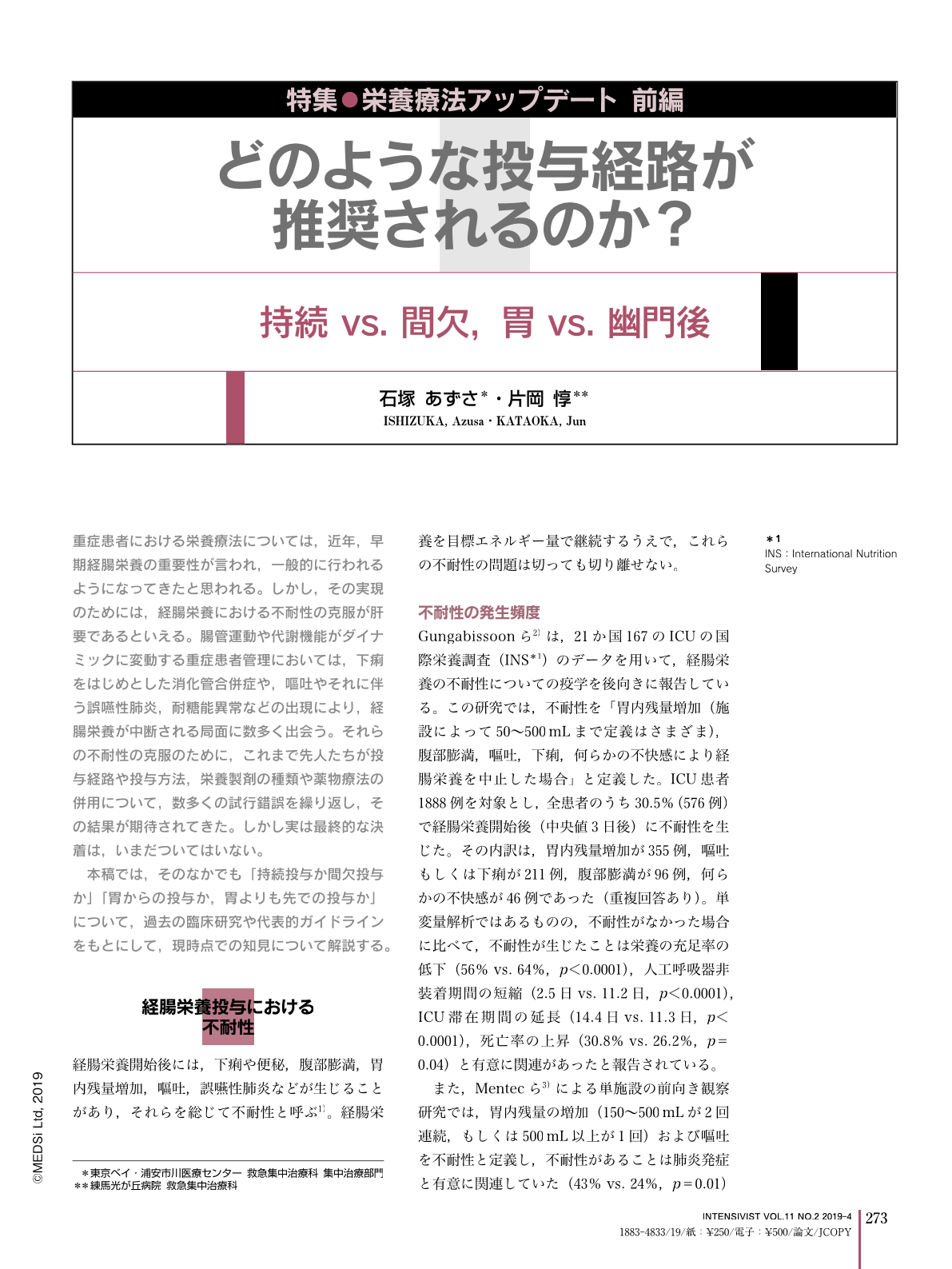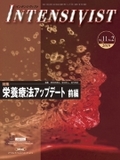Japanese
English
- 有料閲覧
- Abstract 文献概要
- 1ページ目 Look Inside
- 参考文献 Reference
重症患者における栄養療法については,近年,早期経腸栄養の重要性が言われ,一般的に行われるようになってきたと思われる。しかし,その実現のためには,経腸栄養における不耐性の克服が肝要であるといえる。腸管運動や代謝機能がダイナミックに変動する重症患者管理においては,下痢をはじめとした消化管合併症や,嘔吐やそれに伴う誤嚥性肺炎,耐糖能異常などの出現により,経腸栄養が中断される局面に数多く出会う。それらの不耐性の克服のために,これまで先人たちが投与経路や投与方法,栄養製剤の種類や薬物療法の併用について,数多くの試行錯誤を繰り返し,その結果が期待されてきた。しかし実は最終的な決着は,いまだついてはいない。
本稿では,そのなかでも「持続投与か間欠投与か」「胃からの投与か,胃よりも先での投与か」について,過去の臨床研究や代表的ガイドラインをもとにして,現時点での知見について解説する。
Early enteral nutrition support for critically ill patients has been emphasized recently and has become common practice. It is very important to overcome any intolerance of enteral nutrition. In the management of critically ill patients, in whom intestinal motility and metabolic function can fluctuate, one must notice if enteral nutrition is interrupted due to gastrointestinal complications such as diarrhea or emesis, or accompanied by aspiration pneumonia, impaired glucose tolerance, etc. In order to overcome any lack of tolerance, changes in the route of administration,method of administration, type of nutritional formulations and medication therapies must be tried, even though it may be difficult to decide on optimal conditions. Based on these facts, this article discusses the optimal administration route, “sustained vs. intermittent”, “stomach vs. distal to the pylorus”, citing past clinical trials, guidelines and present practice as evidence.

Copyright © 2019, MEDICAL SCIENCES INTERNATIONAL, LTD. All rights reserved.


